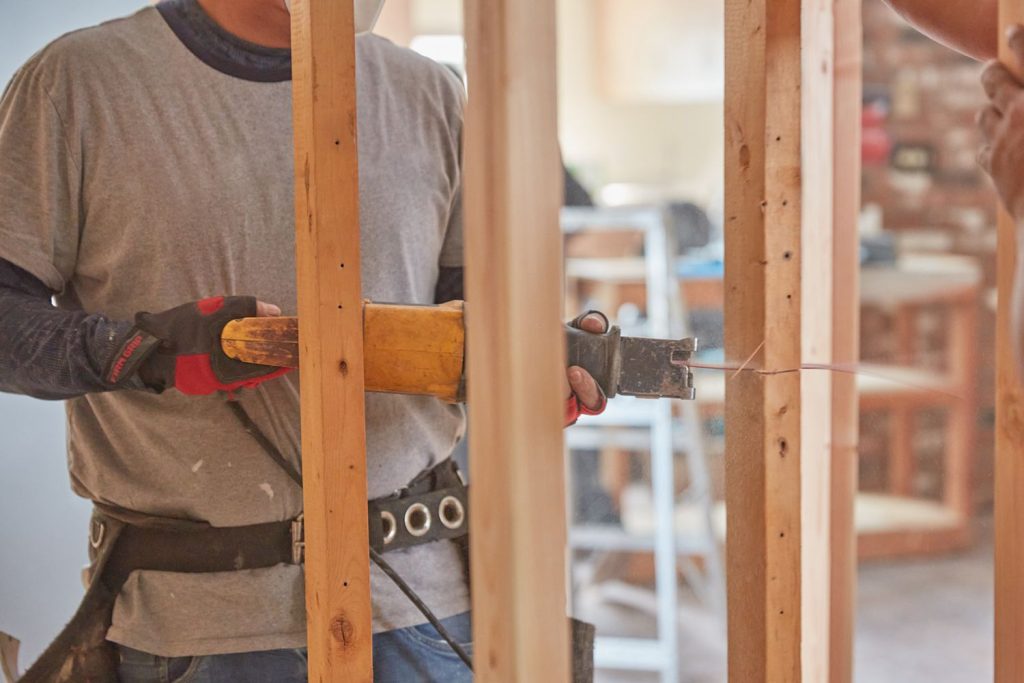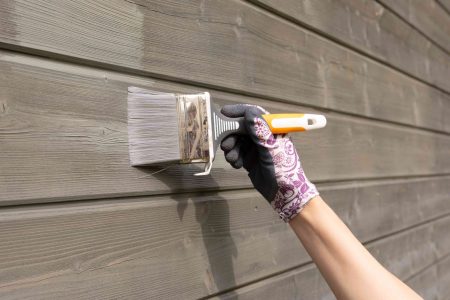If you own a house that is getting a little shabby, it might be beyond the point of more minor home improvements. As with an older vehicle, minor repairs are good for keeping the car running, but eventually a complete rebuild—or even a new car—might be in order.
Houses are the same. After many years of window repairs, siding fixes, and flooring replacements, it just might be time to completely rebuild the house or do a major, whole-house remodel.
This is a big decision that requires careful consideration. To make the right choice for your budget and needs, start with a few questions, then take a hard look at what you hope to achieve, the condition of your existing house, and local laws that may affect the project.
| Rebuild | Remodel | |
| Expected Residency | Best choice for expected long-term residency (more than 5-10 years) | Best for the short term (less than 10 years) |
| Budget | Requires more money spent in a shorter amount of time | Requires less money that can be spaced out over time |
| Alternative Living Arrangements | Not possible to live in the home, so other arrangements are necessary | While uncomfortable, you may be able to keep living in the home |
| Current Condition of House | Poor foundation and structure beyond repair | Foundation and structure can remain |
| Zoning and Permits | More zoning restrictions and permits | Less zoning and permits |
How Long Will You Stay in Your Home?
If you plan to be in the house for the long-term and then sell it, it is usually wiser to tear down and rebuild the house, at least from a purely financial perspective.
Physical elements of a home are on a timer. The minute the hammer strikes your house for the last time, that timer starts ticking. Exterior paint might last up to seven years, but more like five years in inclement climates. Dishwashers last less than a decade, central air conditioners last about 10 to 15 years, and three-tab composite shingles are good for about 20 years.
On top of that, while some elements’ lifespans are staggered, many others expire at roughly the same time. In terms of cost, replacing a dishwasher is nobody’s idea of fun, but just imagine having to do that in the same calendar year that you replaced your roof, gutters, and central air conditioner.
By rebuilding, you reset the clock in terms of the house’s physical nature: everything from the appliances to the house’s envelope (e.g., roofing, siding, etc.). When it comes time to sell 15 years later, you’re selling a 15-year-old house instead of one that is 40 years old.
As a bonus, you had the pleasure of living in a new house during those 15 years. Buyers are intimately attuned to the age of houses—if they aren’t, their real estate agent and house inspector will make them well aware of this fact.
How Much Do You Want to Spend?
If you’re tight on money, a major house remodel, while expensive, will cost less than a whole house rebuild.
The tear-down and rebuild option is all-or-nothing. After your first big purchase—the demolition—you’re left with a vacant lot, committing you to build the new home.
By contrast, a house remodel can be done on a rolling basis. Not all projects need to be done at the same time. You can start by remodeling a bathroom and then move on to other rooms as your budget and time allow. While spacing out a major remodel over the long term might tax your sanity, it will allow you to spend less money and space those payments over time.
With the whole-house rebuild, unless you want to be the owner of a vacant lot, you must keep moving forward. The worst thing is to have a house that is partially complete because structures left exposed to the elements age quickly.
Alternative Living Arrangements
Most remodeling projects can be completed while you are occupying the home. This can be a benefit in both cost savings and convenience. It also may be necessary if it is your primary residence.
Keep in mind, however, that your family will be living in a construction zone for a time. Consider safety issues regarding children and pets during remodeling.
A complete tear-down and rebuild will require you and your family to make other, temporary living arrangements during construction. Consider the extra costs involved that come with having to move out of your home for up to several months if you decide to rebuild.
Current Condition of the House
While all houses can be remodeled, not all houses should be. Industry professionals generally agree that the following conditions merit a tear-down/rebuild, or at least swing the argument further in that direction:
More Space Is Required
Desired improvements cannot be contained within the existing house footprint. Thus, you want an addition. The need for additional space is not the only reason for building anew; additions get built all the time. The issue is that it happens in conjunction with extensive, expensive remodels of the existing house—a double draw on your funding.
Foundation and Structure in Poor Condition
When the foundation is bad and requires a lot of work, you might even need to jack the house before the house can be remodeled. Ultimately, the foundation and basic structure of the home need to be in sound condition to allow for major remodeling projects. If they aren’t, then the house should be rebuilt.
High Real Estate Comparables
Discuss local real estate comparables, or comps, with a real estate professional to see if rebuilt houses in the immediate vicinity are selling for vastly more than the current value of your home. If you have a 60-year-old house and most houses around it have recently been rebuilt, it might pay to rebuild your house.
Be Aware of Zoning Restrictions
Zoning laws govern the type, size, and location of buildings on any property. In urban and many suburban areas, home rebuilds often are restricted to the footprint of the original house. In other words, many communities place limits if you want to tear down a small house and put up a sprawling mansion.
In general, zoning and permitting usually favor the major house remodel over the total house rebuild.
Zoning laws also may restrict the height of a new house, so you may be limited to not only the old footprint but also to a one- or two-story structure.
Additionally, laws may not allow rental properties in many zones. If you’d like to build an addition or carriage house to use for renters, this may not be allowed.
At the same time, other communities encourage the building of accessory dwelling units (ADUs) like carriage houses or backyard cottages. Portland, Oregon, for example, now allows up to two ADUs on a single residential property.
Be sure to investigate zoning and permitting laws in your city or county before beginning work whether remodeling or rebuilding.
Read the full article here














